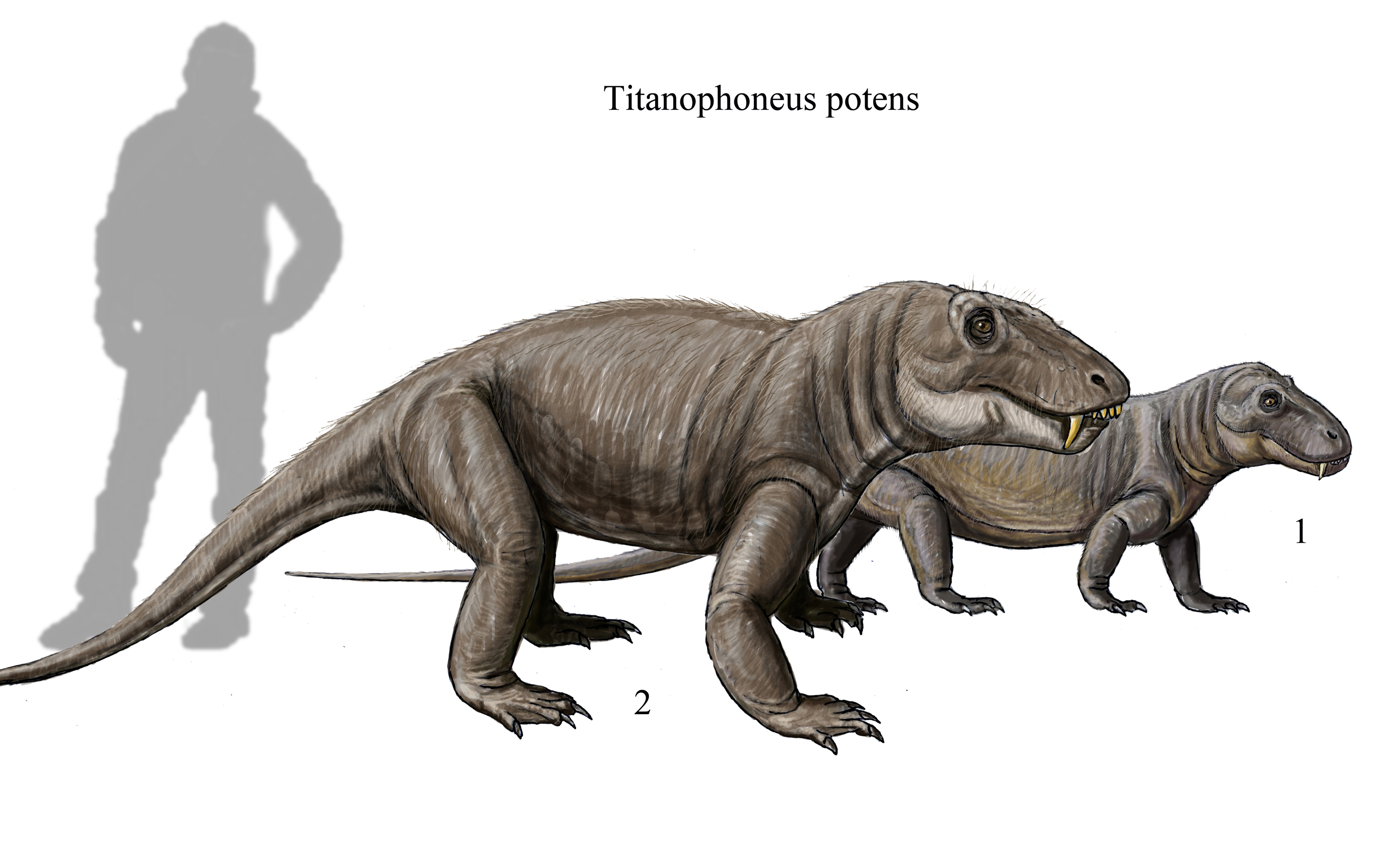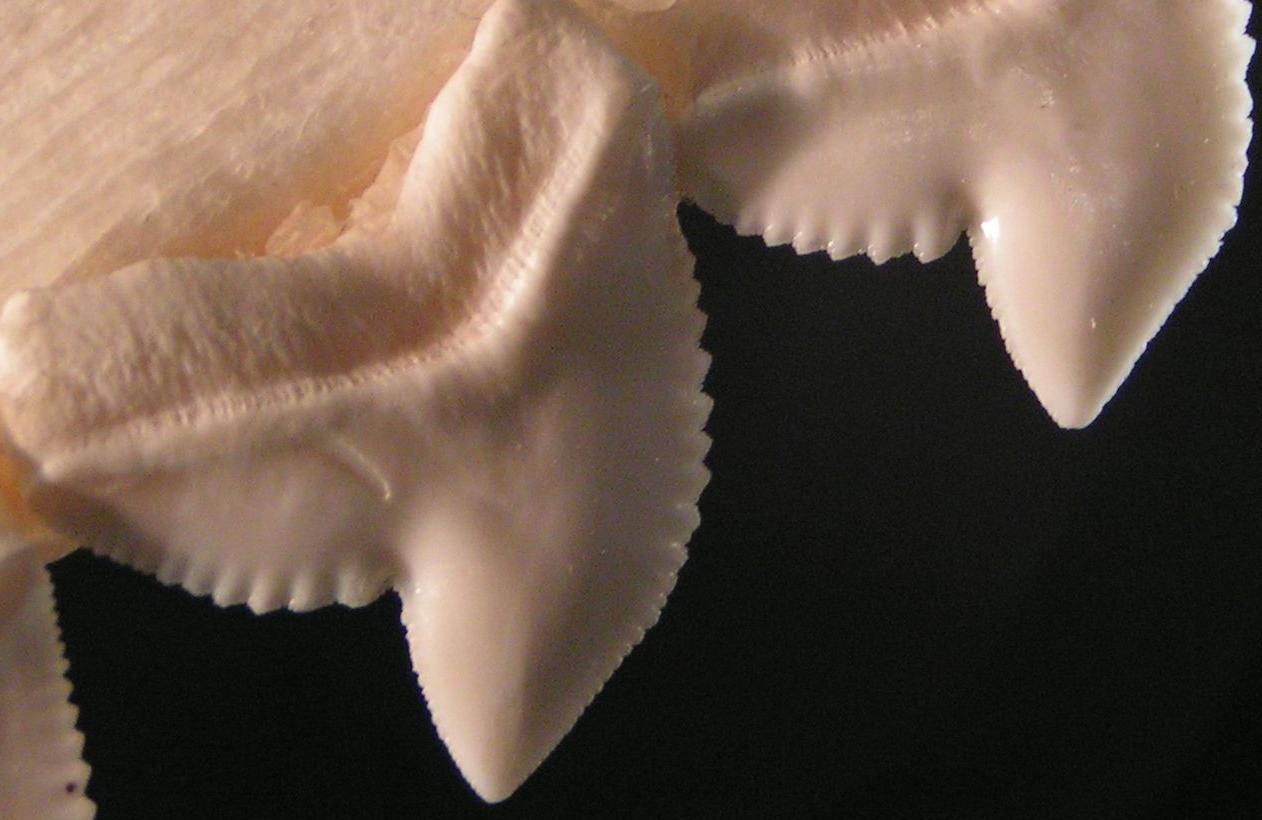|
Ictidosaurus
''Ictidosaurus'' was a therapsid genus found in the Abrahamskraal Formation of South Africa, which lived during the middle Permian period. Fossils of the type species were found in the ''Tapinocephalus'' (Capitanian age, 265.8-260.4 Ma), and the base of the ''Eodicynodon'' (Wordian age, 268–265.8 Ma) assembly zones, of the Karoo Basin. Older classifications of the species, along with many other specimens found in the Iziko South African Museum archives, were originally classified within therocephalian family names, in this case the Ictidosauridae, which has been reclassified as belonging to the Scylacosauridae. The type species is ''I. angusticeps''. Description Type specimen The holotype was of the ''Ictidosaurus angusticeps'' labeled SAM-PK-630 (NMQR 2910), found in the Tapinocephalus assembly zone. The skull measured 168 mm from snout to posterior of the left mandible, 41 mm across the skull in-between the canines, and 41 mm in height, and has been heavily disturbed by f ... [...More Info...] [...Related Items...] OR: [Wikipedia] [Google] [Baidu] |
Therocephalia
Therocephalia is an extinct suborder of eutheriodont therapsids (mammals and their close relatives) from the Permian and Triassic. The therocephalians ("beast-heads") are named after their large skulls, which, along with the structure of their teeth, suggest that they were carnivores. Like other non-mammalian synapsids, therocephalians were once described as "mammal-like reptiles". Therocephalia is the group most closely related to the cynodonts, which gave rise to the mammals. This relationship takes evidence in a variety of skeletal features. The fossils of therocephalians are numerous in the Karoo of South Africa, but have also been found in Russia, China, Tanzania, Zambia, and Antarctica. Early therocephalian fossils discovered in Middle Permian deposits of South Africa support a Gondwanan origin for the group, which seems to have spread quickly across Earth. Although almost every therocephalian lineage ended during the great Permian–Triassic extinction event, a few represe ... [...More Info...] [...Related Items...] OR: [Wikipedia] [Google] [Baidu] |
Scylacosauridae
Scylacosauridae is an extinct family of therocephalian therapsids. Scylacosaurids lived during the Permian period and were among the most basal therocephalians. The family was named by South African paleontologist Robert Broom in 1903. Scylacosaurids have long snouts and unusual saber-like canine teeth. References External links Scylacosauridaein the Paleobiology Database The Paleobiology Database is an online resource for information on the distribution and classification of fossil animals, plants, and microorganisms. History The Paleobiology Database (PBDB) originated in the NCEAS-funded Phanerozoic Marine Pale ... Guadalupian first appearances Lopingian extinctions Prehistoric therapsid families {{paleo-Therapsid-stub ... [...More Info...] [...Related Items...] OR: [Wikipedia] [Google] [Baidu] |
Middle Permian
The Guadalupian is the second and middle series/epoch of the Permian. The Guadalupian was preceded by the Cisuralian and followed by the Lopingian. It is named after the Guadalupe Mountains of New Mexico and Texas, and dates between 272.95 ± 0.5 – 259.1 ± 0.4 Mya. The series saw the rise of the therapsids, a minor extinction event called Olson's Extinction and a significant mass extinction called the end-Capitanian extinction event. The Guadalupian was previously known as the Middle Permian. Name and background The Guadalupian is the second and middle series or epoch of the Permian. Previously called Middle Permian, the name of this epoch is part of a revision of Permian stratigraphy for standard global correlation. The name "Guadalupian" was first proposed in the early 1900s, and approved by the International Subcommission on Permian Stratigraphy in 1996. References to the Middle Permian still exist. The Guadalupian was preceded by the Cisuralian and followed by the Lop ... [...More Info...] [...Related Items...] OR: [Wikipedia] [Google] [Baidu] |
Dentition
Dentition pertains to the development of teeth and their arrangement in the mouth. In particular, it is the characteristic arrangement, kind, and number of teeth in a given species at a given age. That is, the number, type, and morpho-physiology (that is, the relationship between the shape and form of the tooth in question and its inferred function) of the teeth of an animal. Animals whose teeth are all of the same type, such as most non-mammalian vertebrates, are said to have '' homodont'' dentition, whereas those whose teeth differ morphologically are said to have '' heterodont'' dentition. The dentition of animals with two successions of teeth (deciduous, permanent) is referred to as ''diphyodont'', while the dentition of animals with only one set of teeth throughout life is ''monophyodont''. The dentition of animals in which the teeth are continuously discarded and replaced throughout life is termed ''polyphyodont''. The dentition of animals in which the teeth are set in so ... [...More Info...] [...Related Items...] OR: [Wikipedia] [Google] [Baidu] |
CAT-scan
A computed tomography scan (CT scan; formerly called computed axial tomography scan or CAT scan) is a medical imaging technique used to obtain detailed internal images of the body. The personnel that perform CT scans are called radiographers or radiology technologists. CT scanners use a rotating X-ray tube and a row of detectors placed in a gantry to measure X-ray attenuations by different tissues inside the body. The multiple X-ray measurements taken from different angles are then processed on a computer using tomographic reconstruction algorithms to produce tomographic (cross-sectional) images (virtual "slices") of a body. CT scans can be used in patients with metallic implants or pacemakers, for whom magnetic resonance imaging (MRI) is contraindicated. Since its development in the 1970s, CT scanning has proven to be a versatile imaging technique. While CT is most prominently used in medical diagnosis, it can also be used to form images of non-living objects. The 1979 Nob ... [...More Info...] [...Related Items...] OR: [Wikipedia] [Google] [Baidu] |
Occlusion (dentistry)
Occlusion, in a dental context, means simply the contact between teeth. More technically, it is the relationship between the maxillary (upper) and mandibular (lower) teeth when they approach each other, as occurs during chewing or at rest. Static occlusion refers to contact between teeth when the jaw is closed and stationary, while dynamic occlusion refers to occlusal contacts made when the jaw is moving. The masticatory system also involves the periodontium, the TMJ (and other skeletal components) and the neuromusculature, therefore the tooth contacts should not be looked at in isolation, but in relation to the overall masticatory system. Anatomy of Masticatory System One cannot fully understand occlusion without an in depth understanding of the anatomy including that of the teeth, TMJ, musculature surrounding this and the skeletal components. The Dentition and Surrounding Structures The human dentition consists of 32 permanent teeth and these are distributed between the ... [...More Info...] [...Related Items...] OR: [Wikipedia] [Google] [Baidu] |
Symphysis
A symphysis (, pl. symphyses) is a fibrocartilaginous fusion between two bones. It is a type of cartilaginous joint, specifically a secondary cartilaginous joint. # A symphysis is an amphiarthrosis, a slightly movable joint. # A growing together of parts or structures. Unlike synchondroses, symphyses are permanent. Examples The more prominent symphyses are: * the pubic symphysis * sacrococcygeal symphysis * intervertebral disc between two vertebrae * in the sternum, between the manubrium and body Body may refer to: In science * Physical body, an object in physics that represents a large amount, has mass or takes up space * Body (biology), the physical material of an organism * Body plan, the physical features shared by a group of anima ... * mandibular symphysis, in the jaw Symphysis disorders Pubic symphysis diastasis Pubic symphysis diastasis, is an extremely rare complication that occurs in women who are giving birth. Separation of the two pubic bones during deli ... [...More Info...] [...Related Items...] OR: [Wikipedia] [Google] [Baidu] |
Mentum
The mentum is an anatomical structure, a projecting feature that is near the mouth of a variety of animals: *In insects, the mentum is the distal part of the labium. The mentum bears the palps, glossae, paraglossae, and/or ligula. *On the human face, the mentum refers to the protruding part of the chin. *In certain sea snails, marine gastropod mollusks, the mentum is a thin projection of the soft parts of the animal, below the mouth. It is found in the family Pyramidellidae Pyramidellidae, common name the pyram family, or pyramid shells, is a voluminous taxonomic family of mostly small and minute ectoparasitic sea snails, marine heterobranch gastropod molluscs. The great majority of species of pyrams are micr .... References Insect anatomy Human anatomy Gastropod anatomy {{animal-anatomy-stub ... [...More Info...] [...Related Items...] OR: [Wikipedia] [Google] [Baidu] |
Premaxilla
The premaxilla (or praemaxilla) is one of a pair of small cranial bones at the very tip of the upper jaw of many animals, usually, but not always, bearing teeth. In humans, they are fused with the maxilla. The "premaxilla" of therian mammal has been usually termed as the incisive bone. Other terms used for this structure include premaxillary bone or ''os premaxillare'', intermaxillary bone or ''os intermaxillare'', and Goethe's bone. Human anatomy In human anatomy, the premaxilla is referred to as the incisive bone (') and is the part of the maxilla which bears the incisor teeth, and encompasses the anterior nasal spine and alar region. In the nasal cavity, the premaxillary element projects higher than the maxillary element behind. The palatal portion of the premaxilla is a bony plate with a generally transverse orientation. The incisive foramen is bound anteriorly and laterally by the premaxilla and posteriorly by the palatine process of the maxilla. It is formed from the ... [...More Info...] [...Related Items...] OR: [Wikipedia] [Google] [Baidu] |
Tooth Eruption
Tooth eruption is a process in tooth development in which the teeth enter the mouth and become visible. It is currently believed that the periodontal ligament plays an important role in tooth eruption. The first human teeth to appear, the deciduous (primary) teeth (also known as baby or milk teeth), erupt into the mouth from around 6 months until 2 years of age, in a process known as "teething". These teeth are the only ones in the mouth until a person is about 6 years old creating the primary dentition stage. At that time, the first permanent tooth erupts and begins a time in which there is a combination of primary and permanent teeth, known as the mixed dentition stage, which lasts until the last primary tooth is lost. Then, the remaining permanent teeth erupt into the mouth during the permanent dentition stage. Theories Although researchers agree that tooth eruption is a complex process, there is little agreement on the identity of the mechanism that controls eruption. There ... [...More Info...] [...Related Items...] OR: [Wikipedia] [Google] [Baidu] |
Serrations
Serration is a saw-like appearance or a row of sharp or tooth-like projections. A serrated cutting edge has many small points of contact with the material being cut. By having less contact area than a smooth blade or other edge, the applied pressure at each point of contact is greater and the points of contact are at a sharper angle to the material being cut. This causes a cutting action that involves many small splits in the surface of the material being cut, which cumulatively serve to cut the material along the line of the blade. In nature, serration is commonly seen in the cutting edge on the teeth of some species, usually sharks. However, it also appears on non-cutting surfaces, for example in botany where a toothed leaf margin or other plant part, such as the edge of a carnation petal, is described as being serrated. A serrated leaf edge may reduce the force of wind and other natural elements. Probably the largest serrations on Earth occur on the skylines of mountains (th ... [...More Info...] [...Related Items...] OR: [Wikipedia] [Google] [Baidu] |






